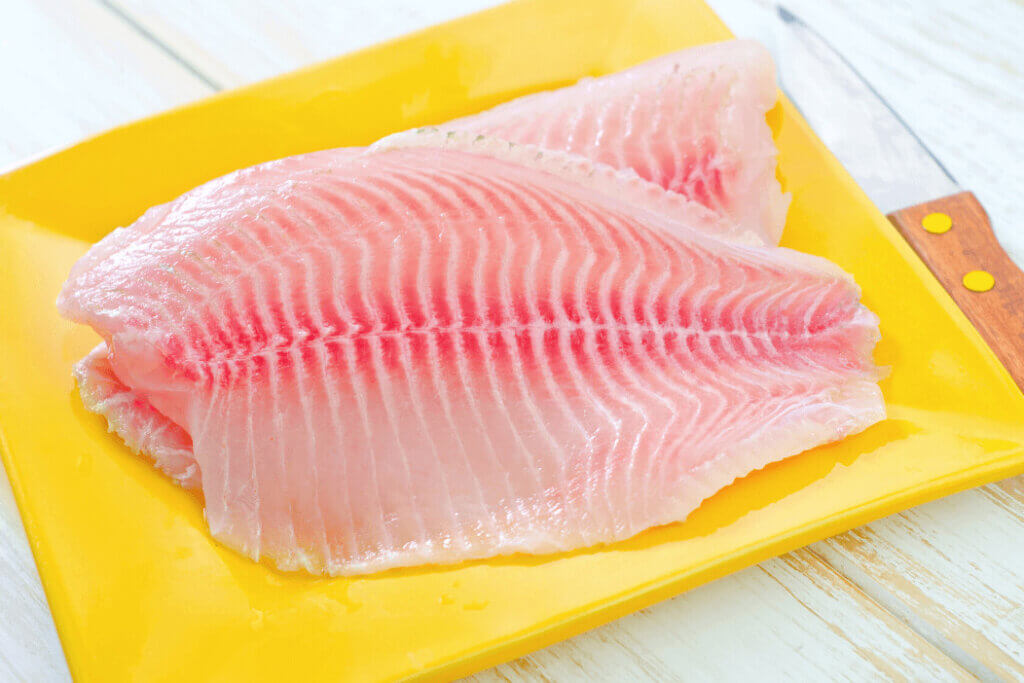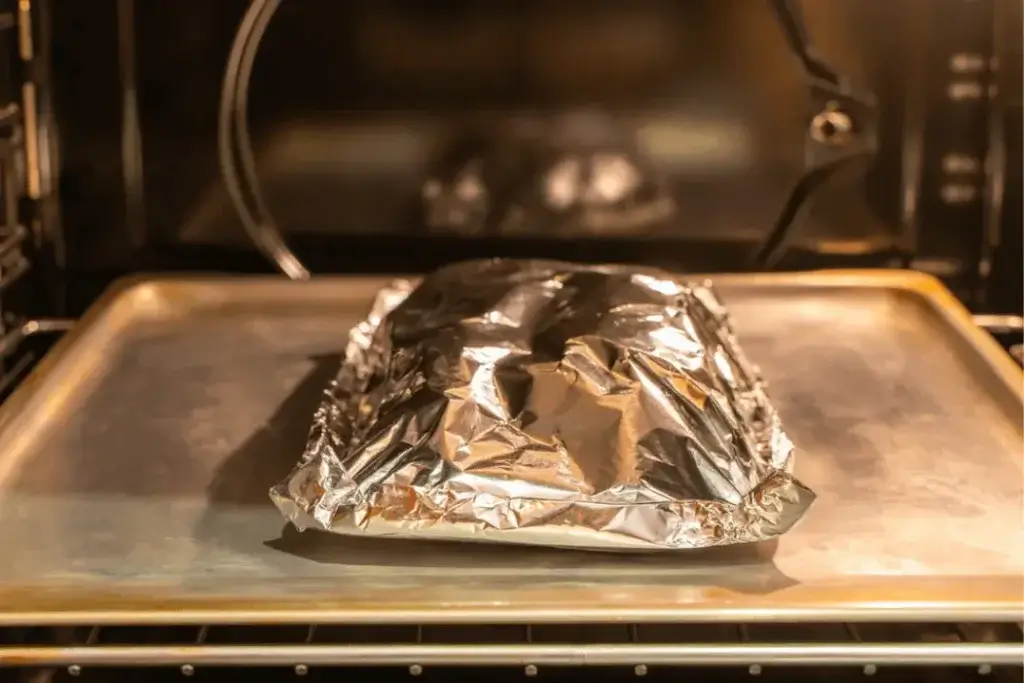Do you forget to take your frozen fish out of the freezer until the last minute? Are you overwhelmed at thinking how long it will take to thaw and become edible? Don’t worry because there’s an effective and fast way to defrost your fish in a microwave.
This blog post will cover the basics of why, when, and how to defrost fish in a microwave safely. No more dealing with hours-long waiting times or ruined dinners – let’s learn about this convenient cooking hack!
Table of Contents
Can you Defrost fish in a Microwave?
Fish can be defrosted in the microwave; that is not a problem. Because fish is a delicate food, special care must be taken while microwaving it to ensure it does not get overcooked.
Ensure the microwave is set to thaw and check on the food regularly to ensure it is not overdone. Please remove it from the microwave when the fish is flexible to the touch. The carryover heat will finish defrosting the fish even if the surface may still be frozen.
Turning off the timer earlier may prevent the fish from becoming overcooked or developing hot patches due to uneven defrosting.
When it is time to thaw frozen fish, take it out of its packaging, place it on a plate that can be heated in the microwave, choose the defrost setting on the microwave, and microwave it for one to two minutes. When the fish reaches a temperature that feels lukewarm to the touch, let it cool down to room temperature.
When defrosting food in the microwave, set the power level to low or 30 percent. If the temperature is raised any further, the fish will start to fry and not defrost correctly.
How Long Does It Take for Fish to Thaw in the Microwave after Being Frozen?
Fish that has been frozen may be defrosted in a microwave for around two to three minutes. Check on it every so often to make sure it is defrosting evenly and making sure it is not cooking by mistake.
Utilize the microwave’s defrost mode or a power level of 30 percent for thawing frozen food. When the fish becomes mushy, and only a few ice crystals are left on the surface, the defrost cycle can be stopped.
Defrosting the fish entirely in the microwave should take around two to three minutes. Put the fish in the appliance after it has been switched off for a few minutes to enable the carry-over heat to soften the fish. This should be done if the fish has not defrosted evenly.
The microwave’s wattage influences the setting used for defrosting, which might vary from model to model. Because every model has a unique wattage and set of features, it isn’t easy to establish a certain amount of time for defrosting.
The Microwave Method for Defrosting Fish:
If you choose to thaw fish in the microwave, it is imperative that you take the necessary precautions to avoid getting food poisoning or any other sort of foodborne disease. To defrost fish in the microwave in a safe manner, follow the procedures below:
1. Place the Frozen Fish in a Dish That Is Safe for Use in the Microwave:

Pull your fish from the freezer and set it on a microwave tray in a dish that is safe to be heated in a microwave, like a plate or a pan that is safe to be heated in a microwave. To ensure that each component thaws at the same pace, you must first separate it. If the individual parts are frozen solid, you may need to microwave them for one minute before separating them. This is necessary if you want to avoid breaking the ice.
2. Put Something Over the Food:

To prevent the pieces from exploding in the microwave while cooking, cover them with a cover or tin foil and set them in the appliance. Check that the fish are not coming into contact with any of the walls. If it happens, try putting a plate behind it, so the splatter doesn’t spread all over the place.
3. Place in Microwave and Cook on the Defrost Setting for Three to Six Minutes:

Defrost your food in the microwave for a few minutes after setting it to the appropriate temperature. If your microwave does not have a setting for defrosting, you should set it to 50% energy and microwave the food in increments of 30 seconds.
4. After a Brief Inspection, Flip the Fish Over:

Perform checks on the fish at regular intervals. Once the microwave has reached the halfway point of the allotted cooking time, remove the fish from the container, turn it over, and reorganize it to cook evenly for the remaining time.
5. Before Putting Your Fish to Use, Be Sure It Has Been Fully Thawed:

Feel the thicker sections of the fish to determine whether or not it is done. When the defrosting process is complete, the fish should be malleable but should have a tiny chill to the touch. After taking it out of the freezer, let it thoroughly defrost by sitting it on a plate for five minutes.
6. Put To Use Right Away:

After defrosting in the microwave, the fish should be cooked as soon as possible. Fish that has been thawed should not be refrozen. If you don’t do that, you risk having a piece of fish that has gone bad by the time you try to prepare it.
Is the Microwave a Suitable Method for Defrosting Frozen Fish Fillets?
The answer is yes; fish fillets that have been frozen can be defrosted in the microwave. Because fish fillets heat up very fast, it is essential to check on them frequently while microwaving to remove any hotspots that may start cooking.
Because of this, it is preferable to remove the fish fillets while the fish is still ice but is beginning to get malleable. This may be done when the fish is at its most flexible.
Fillets of fish are often relatively thin, tiny, and ready to eat in a concise amount of time. If you thaw fish fillets in the microwave and make even the slightest mistake, you will have ununiformly cooked fillets.
Utilizing a microwave to thaw food at a low power setting and doing periodic checks is necessary to save time. If your microwave does not offer an environment for defrosting, you should use a low power or a heat level of 30 percent.
A microwave device may overheat the fish fillet in specific locations because of its irregular heat and the extreme temperature changes it causes. This will impact the fish’s texture, quality, and flavor. The fillet’s thinner parts can be partially cooked using this method.
Is Defrosting Fish in the Microwave a Healthy Option?
Yes, defrosting fish in the microwave is a healthy option. Check on it periodically to ensure it is thawing evenly and stopping the defrosting cycle when the fish is pliable, but a tiny bit of ice remains on the surface.
When using a microwave to defrost fish, it is essential to do it properly. Otherwise, the microwave may cook the fish in some hotspots. Because fish heats up quite rapidly, you must check on it occasionally to ensure it defrosts evenly.
The United States Department of Agriculture (USDA) reports that defrosting perishable food in the microwave places it in a temperature risk zone. Temperatures between 40 and 140 degrees Fahrenheit are optimal for the rapid multiplication of germs.
Consequently, it is strongly suggested that the fish be cooked as soon as it has been defrosted. When defrosting fish in a microwave, keeping the fish at room temperature for more than two hours is not advisable.
Using the Microwave to Thaw Fish: Some Helpful Tips
Before cooking fish, it is best to let it thaw first; the microwave is the most convenient and efficient technique. The flavor and consistency of the fish purchased frozen can be preserved even after it has been wholly defrosted in as little as a couple of minutes.
To ensure that the fish defrosts evenly in the microwave, make sure to follow the following tips:
- If you want to thaw food properly in your microwave, you should consult the handbook and instructions that came with it.
- Use a dish or bowl suitable for the microwave; generally speaking, glass and ceramic plates are eligible for use in a microwave.
- First, heat it in the microwave for half the allotted time, then turn it over and cook it for the remaining time.
- To ensure that the food defrosts evenly, flip it frequently and check on it.
- After the fish has been defrosted, it should be cooked immediately.
- If you are not going to thaw the fish before cooking it, you will need to increase the cooking time so that the fish is thoroughly and uniformly cooked throughout.
Frequently Asked Questions:
Is it possible to prepare frozen fish straight away?
Several cooking techniques are suitable for using frozen fish straight from the freezer. Cooking techniques such as poaching, baking, and steaming are included in this category. Bear in mind, however, that even though you may cook a fish directly from the freezer using these techniques, you will need to extend the time you cook the fish to guarantee that it is well-cooked.
Can you thaw fish in hot water?
Yes, you can thaw fish in hot water. This method is an effective way to defrost frozen fish quickly and safely. It involves submerging the fish in hot water, ensuring it’s completely covered. The temperature of the water should be between 120 to 140 degrees Fahrenheit — any hotter than this could begin to cook the fish, ruining its flavor. The thawing process should take around 10 minutes, depending on the size of the fish. Once the fish is completely thawed, you can remove it from the water and cook it right away. Be sure to discard any remaining moisture after thawing your fish.
How to defrost fish quickly?
One of the fastest and safest ways to defrost fish quickly is to use cold water. To do so, take the frozen fish out of its packaging and place it in a resealable bag. Submerge the bag in a bowl or bucket of cold tap water. Change the water every 30 minutes to ensure that it stays cold and continues to thaw the fish. Depending on the size and thickness of your fish, it should be thawed entirely within an hour or two.
Bottom Line:
Following these simple steps, you’ll have perfectly thawed fish for dinner tonight. And remember – the key to any good meal is proper planning. So be sure to take your fish out of the freezer in time to let it defrost slowly and evenly in the microwave. With a little bit of forward-thinking, you’ll be on your way to enjoying a delicious, healthy seafood dinner tonight.







